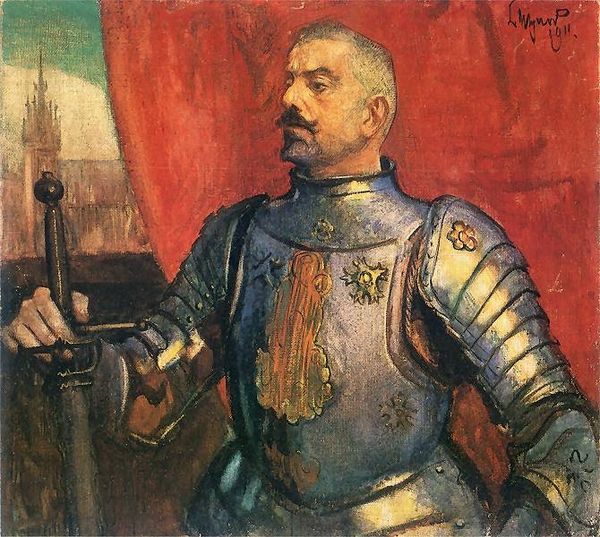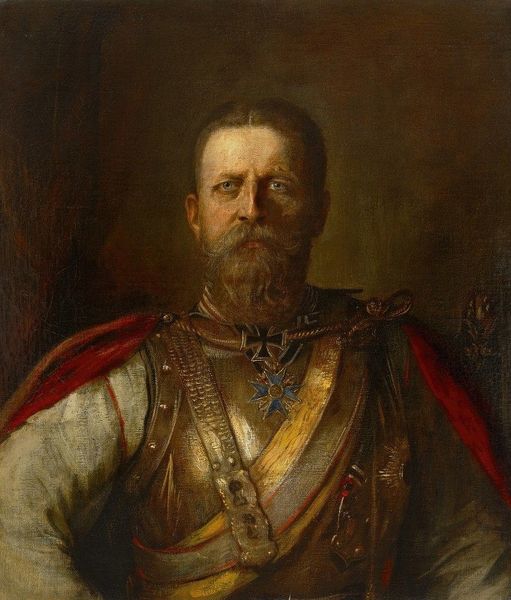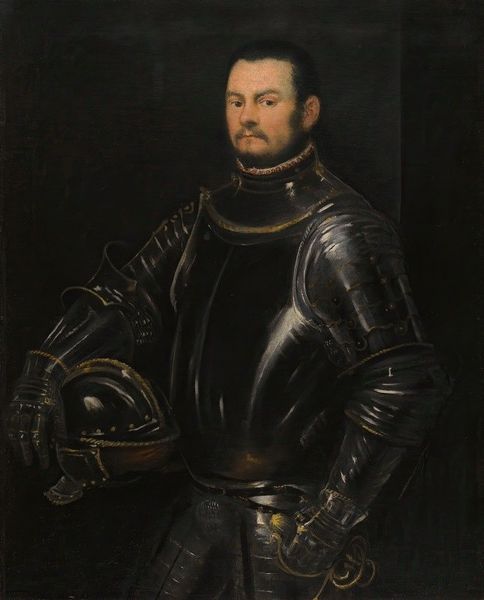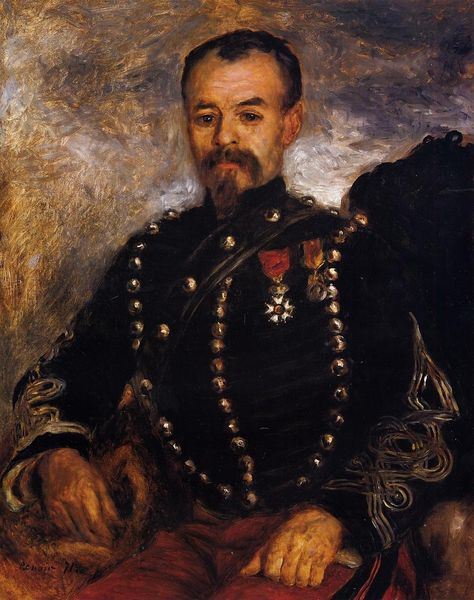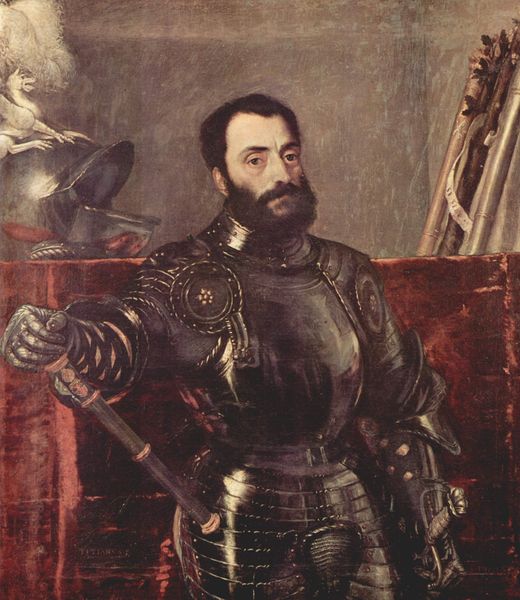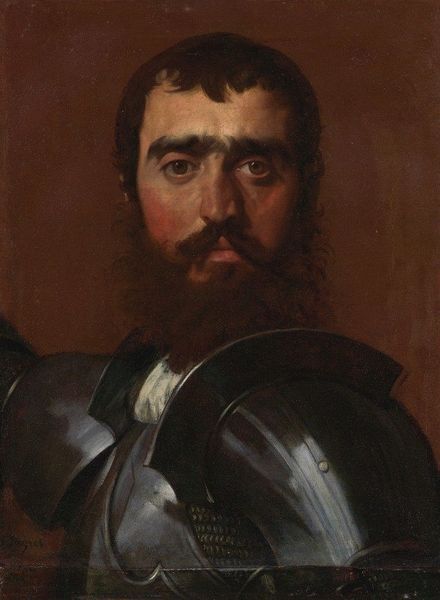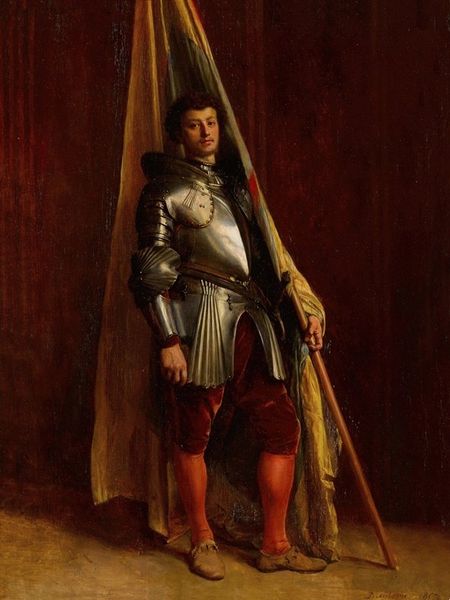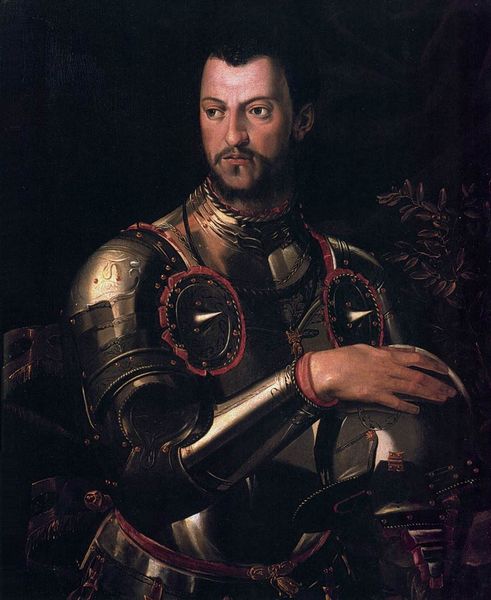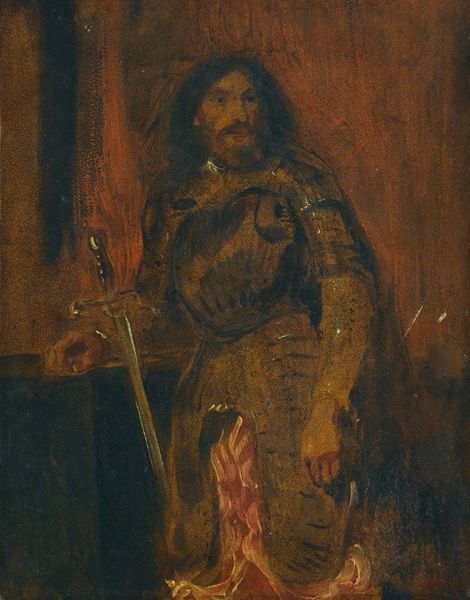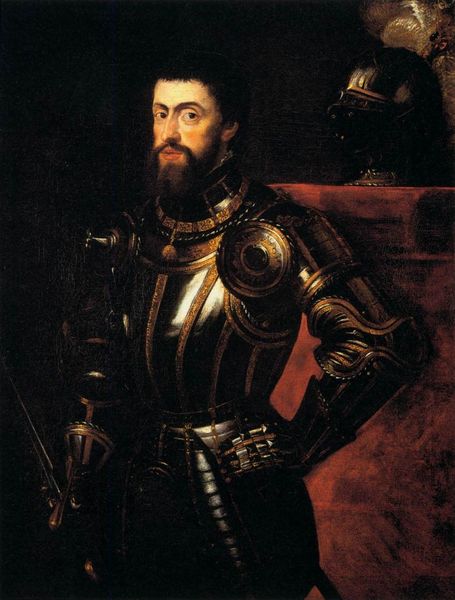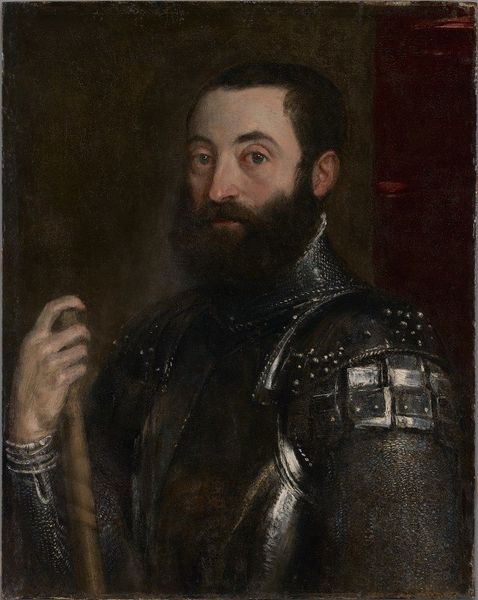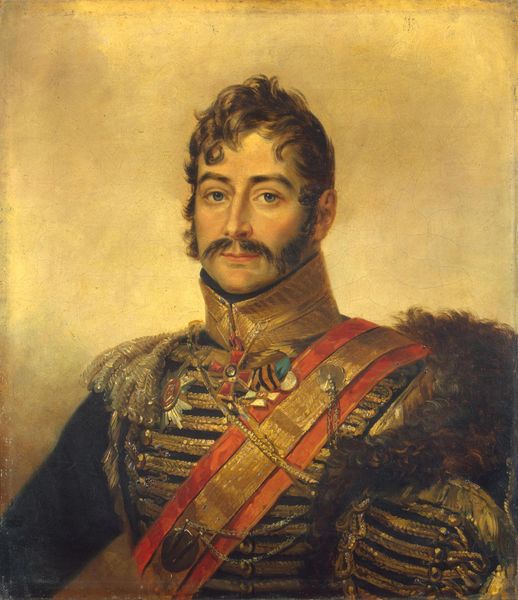
oil-paint
#
portrait
#
self-portrait
#
oil-paint
#
oil painting
#
neo expressionist
#
neo-expressionism
#
expressionism
Copyright: Public domain
Curator: What an intriguing self-portrait by Lovis Corinth, dating back to 1911. It's entitled *Self-Portrait as Standard Bearer*. He seems to have chosen an unusual way to represent himself. Editor: It has an undeniably martial air, doesn't it? The weight of history feels palpable in that armour and the somewhat melancholic gaze of the figure. Is this meant to convey a certain symbolism of leadership, or perhaps a burden? Curator: It's fascinating you pick up on the burden aspect. The standard bearer traditionally carries the banner in battle or ceremony, representing ideals, perhaps. But Corinth paints himself in the guise, imbuing it with psychological depth, as if questioning what exactly that standard represents. His gaze is complex, almost world-weary. Editor: And painted in 1911, that's right before the first World War. Is this painting a comment on the military values that prevailed at the time, and their ultimate cost? Considering the political instability of pre-war Europe, it feels heavy with foreshadowing. Curator: Precisely. And let's note Corinth’s neo-expressionist brushwork; it's incredibly raw and energetic, mirroring the emotional intensity of the subject. The impasto of the oils almost vibrates with tension, setting him apart as both subject and symbol. It becomes clear, Corinth did not present himself in an ornamental, academic way, as some military portraits do, but explored his role in an evolving society, full of turmoil. Editor: Absolutely. The bold colours, particularly that striking gold against the cold steel, create a compelling contrast. It does indeed add to the psychological complexity. The figure seems trapped in the costume. And even though Corinth's positionality in his historical context isn't that clear, one cannot deny his personal experience. The emotional impact is huge. Curator: The choice of armor—a somewhat anachronistic image—adds to the layers of interpretation. It ties him to a longer history of leadership, and tradition but sets up a push and pull. He adopts a historical archetype to reflect his concerns with modern instability. What do we remember, and how does this remembering help us define our new space in society? Editor: Well, the museum context, displaying Corinth's portrait now, adds yet another layer to this artistic memory, as well as our responsibility in society. Seeing this painting displayed here in the 21st century really resonates in terms of bearing a standard for something worthwhile, with awareness and without blind faith. Curator: Indeed. Seeing the depth of the layers from his psyche, and societal implications for us to continue unraveling has offered a compelling view through art and time.
Comments
No comments
Be the first to comment and join the conversation on the ultimate creative platform.
